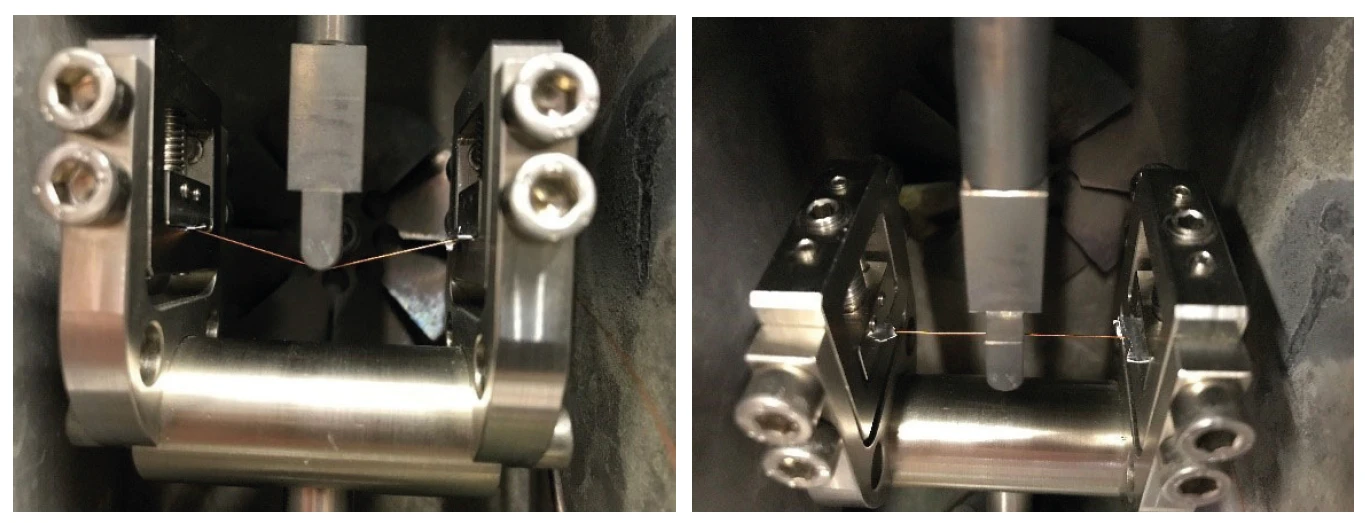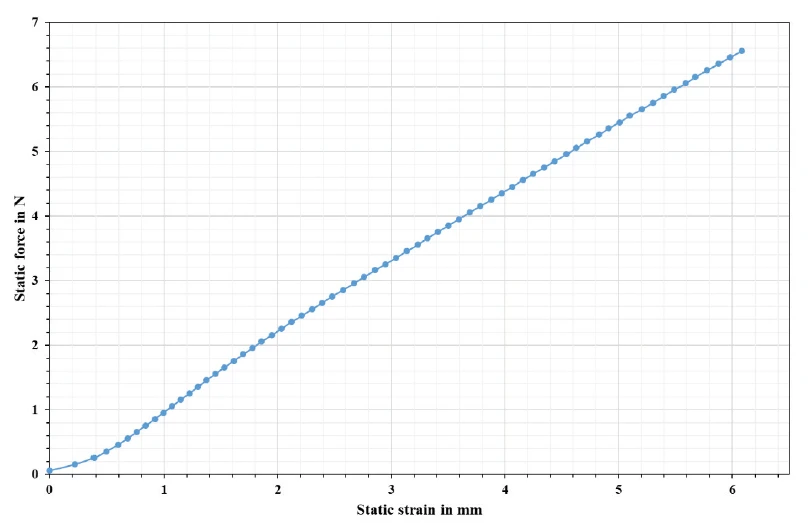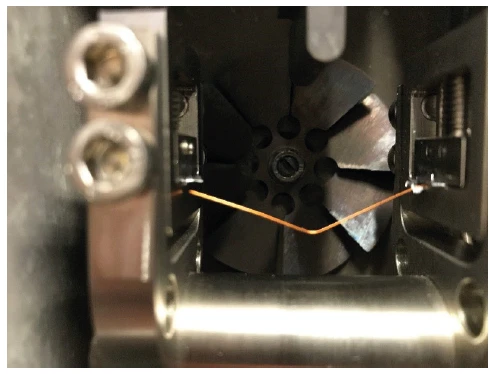Introduction
The supply of electrical energy from generation plants to consumers requires an interconnected network of transmission lines and numerous transformers. The longdistance transport of electrictiy via an overhead contact wire is also a component of public transportation, as it is used in rail systems such as trains, subways and streetcars or trolleybuses.
For the transmission of electrical energy, highly conductive materials are used in order to minimize transport losses and thus avoid voltage drops. The cables are also subjected to high mechanical StressStress is defined as a level of force applied on a sample with a well-defined cross section. (Stress = force/area). Samples having a circular or rectangular cross section can be compressed or stretched. Elastic materials like rubber can be stretched up to 5 to 10 times their original length.stress. In addition to their own weight, the cables are displaced laterally on windy days. For this reason, their maximum lateral deflection must be taken into consideration. An additional requirement for the overhead contact wire is that its dynamic interaction with the current collectors must conform strictly to various standards.
Thanks to the high force reserves and long deformation paths of the high-load DMA GABO Eplexor® and customized sample holders, these real conditions can be reproduced in the laboratory.
Experimental
The highly conductive material copper, with its high Electrical Conductivity (SBA)Electrical conductivity is a physical property indicating a material's ability to allow the transport of an electric charge.electrical conductivity of 58·106 S/m, is primarily used. For this test series, copper wires without insulation are statically stressed in bending at room temperature. The experiment is performed under deformation control with a traverse speed of 1 mm/min. The static force increases in the experiment until the sample breaks. Measurement results are recorded in intervals of 0.1 N. The experimental device is depicted in figure 1. A copper wire with a diameter of 0.23 mm is clamped at the outer fixing point with a holding force of 4 N and then bent in the middle.



Measurement Results
Figure 2 shows the force-displacement curve of the bending test on the copper wire until breakage. The required fracture force amounted to approx. 6.5 N with an elongation-at-break of 2644% or a deformation of 6.08 mm. The rupture of the copper wire is depicted in figure 3. The copper wire is broken at the left fixing point. As is the case under real conditions, high
Summary
Real operating conditions for power lines can be transferred from practice into the laboratory with the help of the high-load DMA GABO Eplexor® thanks to its high force reserves and long deformation paths along with customized sample holders. Though the test was carried out statically, dynamic-mechanical fatigue tests in bending are also possible.